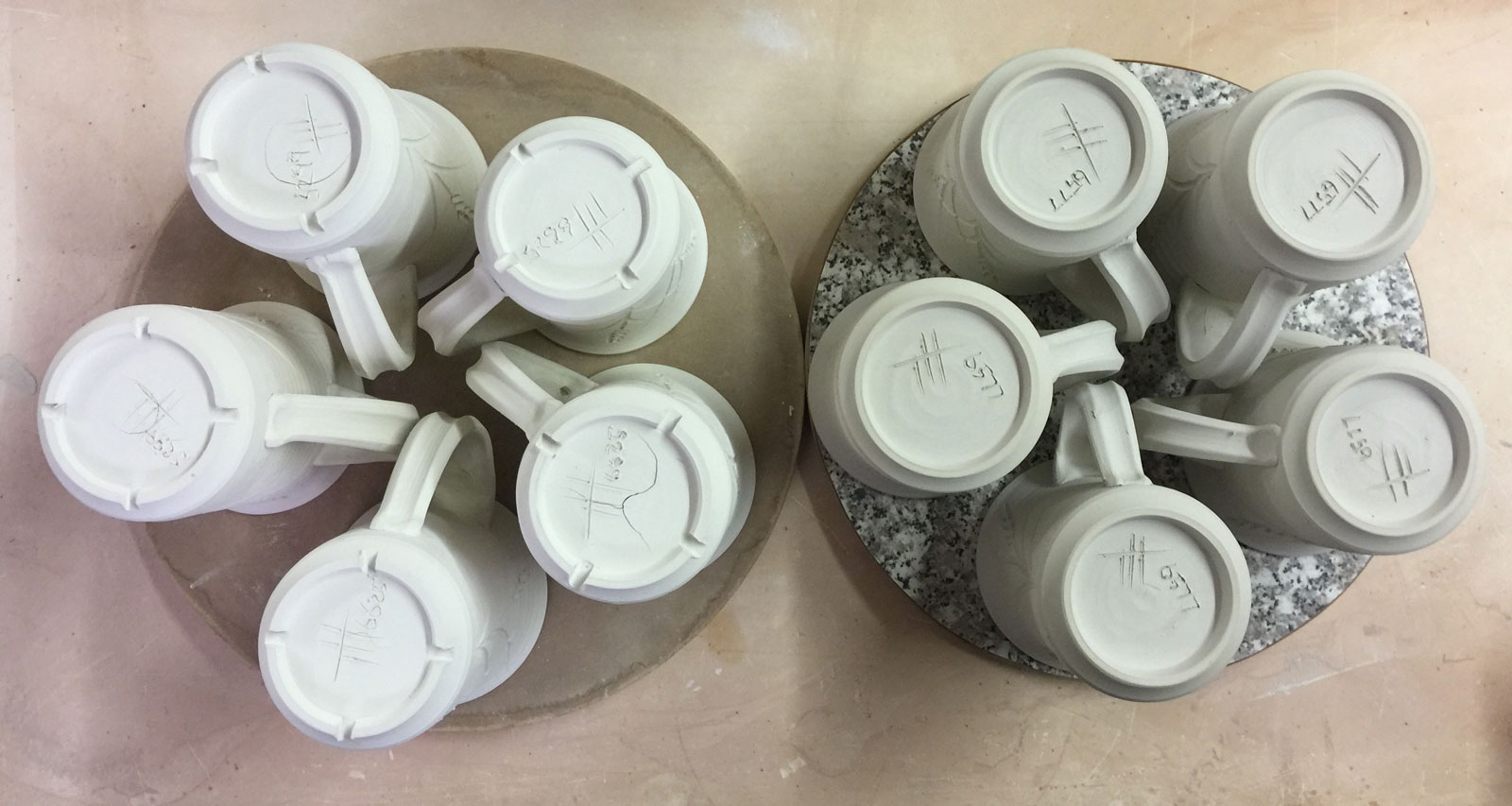| Monthly Tech-Tip | No tracking! No ads! | |
One reason why stoneware clays are more convenient
Fewer drying cracks! These were all made at the same time and dried in the same way. Left: Three out of five porcelain mugs have cracked on the bottoms! Right: None of the stoneware ones have. Sometimes I feel as if those are "crying cracks" instead of "drying cracks". Of course, I could have been more careful with the porcelain. But I keep forgetting items on the "drying success checklist"! So, for production, it makes sense to use a stoneware if at all possible. I can make hundreds of mugs using the body on right, M340, and will not lose a single one!
Related Pictures
It dry shrinks much more yet cracks less. How is that possible?

This picture has its own page with more detail, click here to see it.
Two mugs have dried. The local terra cotta native clay on the left shrinks 7.5% on drying, the porcelain one on the right only 6% (it is made using Kentucky ball clay). Yet few pieces of the terra cotta are ever lost due to drying cracks, even if it is uneven! For example, in a batch of a dozen mugs none of these will be lost whereas one or two of the white ones will always crack. Why? Dry strength. The clay on the left is very strong in the dry state, likely double or triple the white clay (the strength is a by product of its high plasticity and particle size distribution profile). That strength is enough to more than counter the extra shrinkage.
Videos
Links
| Troubles |
Cracking of Clays During Drying
The best way to avoid drying cracks when making ceramics or pottery is to avoid doing the things that cause it. Do not just blame the clay, anything can technically be dried. |
| Glossary |
Stoneware
To potters, stonewares are simply high temperature, non-white bodies fired to sufficient density to make functional ware that is strong and durable. |
| Glossary |
Drying Crack
During drying clays and porcelains shrink as they become rigid. When this occurs unevenly, cracks are the result. |
Got a Question?
Buy me a coffee and we can talk

https://backup.digitalfire.com, All Rights Reserved
Privacy Policy

